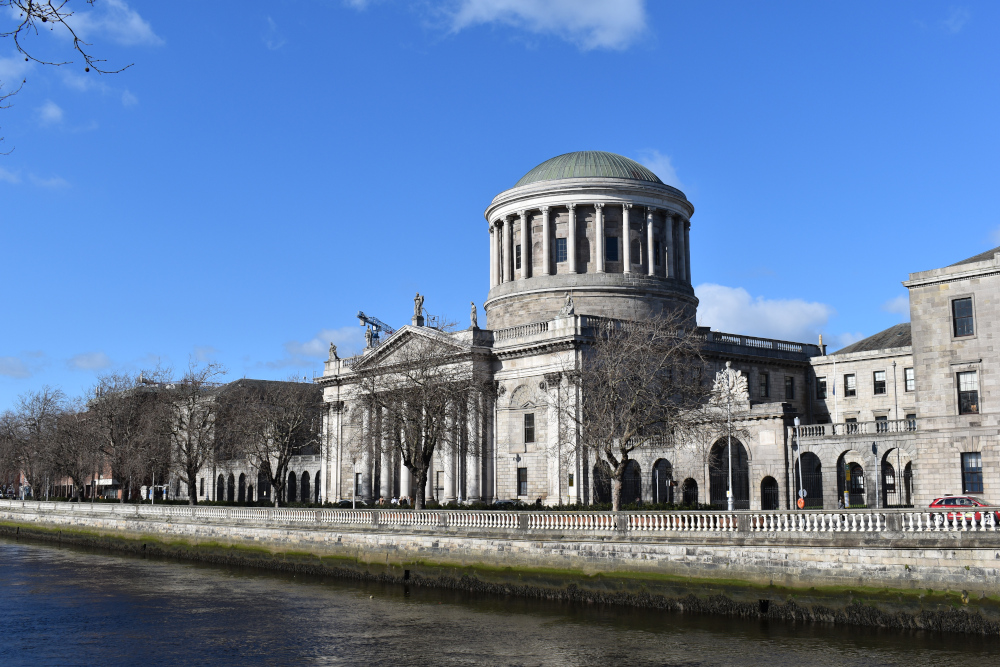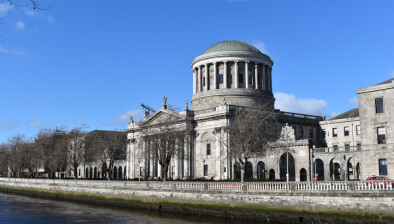Supreme Court: Compensation for depreciation of value of entire land holding available under Electricity (Supply) Act 1927

The Supreme Court has determined that the compensation under s.53(5) of the Electricity (Supply) Act 1927 can include compensation for the depreciation of the value of an entire land holding where that depreciation is caused by the imposition of the burdensome rights provided for by s.53.

About this case:
- Citation:[2025] IESC 27
- Judgment:
- Court:Supreme Court
- Judge:Mr Justice Brian Murray
Delivering the lead judgment for the Supreme Court, Mr Justice Brian Murray confirmed that there was “no logical reason for limiting the compensation payable under the section to the value of the arbitrarily proportioned strip beneath the line”.
Background
The appellants, Mr and Mrs O’Reilly, owned lands in Co Cavan. The ESB wished to run electricity lines across the lands pursuant to its entitlement under s.53(1) of the Electricity (Supply) Act 1927 (as amended) and served two wayleave notices on the O’Reillys in February 2011.
In 2011, the O’Reillys entered an agreement with the ESB pursuant to which, and in return for unobstructed access to construct the lines and all associated works, sums totalling €33,000 were paid by ESB to the O’Reillys. The lines were placed on the property in 2011, entitling the O’Reillys to the payment of compensation pursuant to s.53(5) of the 1927 Act.
In 2018, the O’Reillys sought compensation from ESB pursuant to s. 53(5) in respect of the acquisition of “burdensome rights over land”. The O’Reillys contended that as electric lines and supporting poles and pylons were placed above and on lands of theirs, they were entitled to be paid sums reflecting more than just the impact on the value of the particular strip traversed by the lines or area occupied by the poles or pylons supporting the lines, together with consequent disturbance.
The O’Reillys contended that they were also entitled to compensation for the loss of value of house sites on the holding across which the lines travel, and that they are entitled to be compensated for a general loss of value to that holding, which they termed as compensation for “injurious affection”. ESB disputed that they had any such entitlement.
The respondent arbitrator appointed pursuant to the Acquisition of Land (Assessment of Compensation) Act 1919 to assess compensation agreed with the O’Reillys that they were entitled to compensation of that kind.
As part of his award, the arbitrator also determined that the O’Reillys were entitled to compensation for inter alia the general loss of value to their entire holding based upon the future disruption which could be caused by ESB’s right of subsequent access to repair or maintain the lines under s.53(9).
ESB sought judicial review of the arbitrator’s decision.
The High Court
Mr Justice Mark Heslin determined that “injurious affection” was a creature of statute introduced by the Land Clauses Consolidation Act 1845 and was not a category of loss for which compensation was available under s.53, as inter alia the use of the mechanism under the 1919 Act for the purposes of calculating compensation did not convert the exercise under s.53 into the acquisition of land and so the 1845 Act was not applicable.
Furthermore, the High Court determined that award of compensation to reflect potential future access on part of the ESB to the lands under s.53(9) offended the proper interpretation of s.53 and ran contrary to the intention of the legislature as expressed in s.53(5) and s.53(9), a fundamental error resulting in the making of an award which was outside the arbitrator’s jurisdiction.
Finally, the High Court found that the arbitrator had not breached ESB’s rights to fair procedures by admitting new claims relating to the laying of a fibre optic cable, to injurious affection to site potential along residual road frontage and to S.I. No. 337/2016 Safety, Health and Welfare at Work (Electromagnetic Fields) Regulation 2016 delivered by the O’Reillys on the eve of the hearing, in circumstances where the ESB could have, but did not, apply to adjourn the proceedings or seek to put in an increased offer.
The O’Reillys were granted leave by the Supreme Court to appeal the High Court’s decision on the extent of the compensation to which they were entitled, and granted ESB leave to cross-appeal the decision on the fair procedures issue.
The Supreme Court
Mr Justice Murray determined inter alia that ESB was correct that the exercise of its powers under the 1927 Act did not give rise to the transfer or creation of interests in land and therefore there was no basis upon which it could be said that the provisions of the 1845 Act were automatically incorporated into the procedure for ascertaining compensation under s.53 of the 1927 Act.
The judge presumed that the term “compensation” when it appears in legislation should embody the principle of equivalence, meaning that presumptively, s.53 enables the recovery of compensation to reflect a depreciation in the value of the land holding the subject of the burdensome rights provided for by s. 53 caused by the compulsory imposition of those rights.
Being satisfied that there was nothing in the text, purpose or context of s.53 to displace that presumption, Mr Justice Murray confirmed that once compensation for disturbance was excluded, all of the compensation permitted by s.53 was in the nature of “injurious affection” and that in the absence of an express legislative stipulation, there is “no logical reason for limiting the compensation payable under the section to the value of the arbitrarily proportioned strip beneath the line”.
In this regard, the judge confirmed that the loss in question “includes direct loss due to the siting of the pylons and line on the land and indirect loss due to the depreciation in value of the subject land that is not under the pylons and line”, but noted that the limitation of compensation for the imposition of the rights under s. 53 to exclude losses for the devaluation of property by reason of injurious affect would not be constitutionally invalid and that compensation in respect of the exercise of the powers under s.53(9) was not mandated by the Constitution.
As to the trial judge’s conclusions in respect of the awarding of compensation by the arbitrator for the anticipated exercise by ESB of its powers of re-entry onto the lands for future works, Mr Justice Murray confirmed that Mr Justice Heslin was correct to find that on the plain wording of the relevant provisions, the right to compensation arises when ESB’s powers pursuant to s.53(9) of the 1927 Act are exercised.
Finally, the Supreme Court was satisfied that the High Court was correct to dismiss ESB’s cross-appeal in relation to the admission of the O’ Reillys’ new claims, in circumstances where the arbitrator was entitled to admit same pursuant to his procedural discretion under the Acquisition of Land (Assessment of Compensation) Rules 1920 and where ESB had not established that that discretion was not exercised fairly or not in accordance with the principles of constitutional justice.
Conclusion
Accordingly, the Supreme Court allowed the O’Reillys’ appeal insofar as the trial judge erred in finding that compensation under s.53(5) did not include compensation for depreciation of the entire land holding, but dismissed their appeal against the High Court’s finding that the arbitrator erred in awarding compensation to reflect ESB’s rights under s.53(9) and dismissed ESB’s cross appeal.
The case was returned to the arbitrator to determine the compensation to be awarded de novo.
Electricity Supply Board v Paul Good [2025] IESC 27









